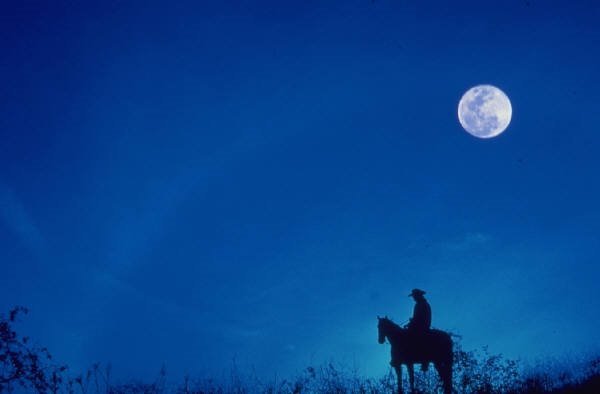A self-proclaimed pioneer of cart commerce in the New England area, Gary Bliss Garabedian, Aah! La Cart's president and CEO, began his entrepreneurial career at a time when pushcarts were still identified with corner peddlers and street vendors. But he recognized intuitively the profitability of making direct contact with large groups of customers in a mall environment.
Back in 1981 when he was traveling in Boston, he saw his first retail cart in a local marketplace. "When I got back to Warwick [RI], I approached my grandfather, who is a partner in the Warwick Mall, and talked to him about placing one in his mall. Well, he called my father and told him he thought I was a little out of it." Despite that skepticism, however, Garabedian and his girlfriend (now his wife), Laurie, got the $2,600 he needed to get started with his first pushcart, purchased from Peckham Woodworking in Hollister, MA. "They were one of the only companies that made carts back then," he recalls.
Garabedian's string of success started with printed shoelaces. "At the time, it was a very big fad to have whales, teddy bears and other images printed on shoelaces. So I just hung them around the cart like salamis, and it turned into a phenomenal success. My first Christmas season I did $40,000 in gross sales. For a kid just out of college, there was a lot of profit in that, because back then the mall rent was much less, and I had very little payroll." With this financial momentum, he started a second cart at another mall, where his program ended up being "the only cart in town"—a niche that benefited from the empty hallways that seemed to funnel shoppers directly to him.
But the 39-year-old admits that besides timing and good luck, personal traits like intuition and assertiveness spawned his accomplishments. In his younger days, Garabedian was known for pushing boundaries. "When I was a rookie, if I saw more people at one end of the mall, I would wheel the cart to that end," he laughed. "The mall manager would come and scold me: 'Why are you moving the cart all around the mall? Everyone is going to get to you eventually,' he would say."
Nonetheless, Garabedian continued with his aggressive approach, a technique he formulated at age 13. "When I was a youngster, I was always interested in making money, whether it was waxing cars in the neighborhood at 13, or selling fruit-and-nut products at flea markets when I was in college," he recalls. With this level of enthusiasm and self-determination, Aah! La Cart's business strategy has focused on product diversity, with lines that capitalized on a number of lucrative fads over the years, including Rubik's Cube in 1983 and Cabbage Patch Dolls in 1987.
Proving to himself that sales didn't always depend solely on the product's popularity but on hard work and a sound business strategy as well, Garabedian embarked on a philosophy of expansion and diversification. "We found we were very capable of doing 12 different concepts at once and doing them at various malls," he says. The key to the success of that approach was thoroughly researching the products as well as his competition: continual visits to other malls in the region to examine their specialty retail programs. He watches traffic flow, demographics, and competitive marketing strategies to determine what he can duplicate or what he can do better.
In the early '90s, the company expanded into more extensive holiday programs, which included temporary in-line novelty stores operated under the name Land of Aahs. "We did pretty well with them," Garabedian says, "but we found that being open year-round led to much greater overhead, and that our cart and kiosk locations, operating simultaneously, were much more profitable." So three years ago, they sold the stores "to concentrate 100 percent on any type of temporary retail—store, kiosk or cart. For the last three years, we've done a 5,000-square-foot temporary in-line Halloween Superstore [contiguous to the mall], a Halloween Headquarters for Kids kiosk, and a costume rental shop, all in the Warwick Mall."
He admits, however, that the temporary in-line strategy includes more risk. "The mall always allots space strictly for Christmas tenants, but Halloween is a different situation," he says. "If a major retailer is interested in space, the mall is going to lease that space. So if they don't have any available space, we can be shut out." On the upside, he says that if you can find space, you'll pay much less for it during the Halloween season than you will during Christmas. "For instance, this year our Halloween season was 35 percent over what we did last year," he explains. "And we had more competition than we've ever had in the past. We had three other retailers within a five-mile radius, and saw all the major retailers starting to capitalize more on the season, which proved the success of our formula: having a lot of customer service, a lot of employees on the floor, and a lot of personalized service." He says that's critical, because people don't have time to spend with mass merchandisers where they get little assistance, see products poorly displayed (or worse), and learn that the products they want are sold out.
And since employees are a crucial part of the success of his promotions, Garabedian motivates and retains good employees by means of incentive programs. "We award our sales associates with [Aah! La Carte] 'Boo Bucks' in different denominations that they can apply towards purchases at any of our seasonal kiosks."
Garabedian also competes by using unique promotional concepts—like the huge, illuminated pumpkin that helps tout his Halloween superstore. "It's pretty much a trademark for us," he says. To keep the creative marketing momentum going, this year he hired a promotional director, whose job is to promote the Halloween business through costume fashion shows, costumed employees and other in-store promotions. "We also do a Web site that gets a lot of hits."
Aah! La Cart takes the conglomerates to task at Christmastime, as well. This year the company introduced Aah! La Cart Sports, which marketed numerous licensed sports-related gifts, novelties and memorabilia in a kiosk environment. Year-round, the company markets Fun Feet slippers and Lipink, in addition to helping others get into the specialty retail business. "I work as a consultant, helping those interested in opening a cart but who don't know what to do."
What about the challenges of specialty retailing? Rather than dwell on negatives, Garabedian prefers to focus on the positive. "In my opinion, the products we sell are fairly recession-proof, because when the economy is bad, people look for fun things." However, he does pay attention to economic trends, prompting him to respond with appropriate marketing strategies. "When the economy is good, we've found that people tend to purchase high-ticket items: jewelry, cars, vacations, rather than lower-priced impulse items. Therefore, this year I joined with a partner and sold rotisserie ovens at $170 per unit, and they sold like crazy."
The company's expansion plans for the rest of this year include licensing the Halloween Headquarters concept to "hauntrepreneurs," expanding cart operations into other malls in the New England area, and pushing more limits, breaking more rules.
Tom R. Arterburn is Executive Director of The Resume Institute.


No comments:
Post a Comment